Why do cucumber leaves turn yellow?

The first answer to the question: “why do the leaves turn yellow at the cucumbers? there will be a lack of moisture. Everyone needs water, especially fruit plants, which, when there is a lack of water, begin to save it and to do this, shed their leaves, and before the leaf falls, it turns yellow due to the fact that the plant begins to pull magnesium from the leaf and redirect it to the stem and roots.
Content:
- Many gardeners make mistakes when watering cucumbers.
- Why do leaves turn yellow if watering is not established?
- Protection of cucumbers
Many gardeners make mistakes when watering cucumbers.
- or they water little and often, believing that this way the plants receive moisture better. But in fact, with small and frequent watering, the moisture does not reach the roots deep, but is distributed in the soil. The plant begins to adapt, and the roots rise higher, where in strong sun they overheat and are also damaged when loosened;
- or water a lot, but rarely. It turns out: at some point the crop is flooded with water, but during hot summers, the water quickly disappears and as a result the plant does not receive the necessary moisture or the roots begin to rot.
It is very important to properly organize watering of cucumbers so that the fruits are undeformed and tasty, and the leaves are green. The norm for watering cucumbers is about 25 liters per plant with twice a week of watering.

Also need to test the soil for moisture, periodically take a piece of earth from a ten-centimeter depth and squeeze it in your hand, determining whether the earth is wet or not, in order to avoid overwatering or underwatering.
Why do leaves turn yellow if watering is not established?
- The wrong area for cucumbers has been selected. Crops need to be alternated, and for cucumbers the area should be one where the sun does not shine strongly at its peak;
- moisture gets on the leaves and in strong sun the leaf gets burned; it is better to water in the evening or early hours of the day;
- cucumbers suffer from elevated air temperatures (this is usually very noticeable in greenhouses). A systematic air flow and regular ventilation are necessary;
- cucumbers lack mineral fertilizers. Thus, a lack of nitrogen will noticeably affect the development of the entire plant: the vines will be thin, the foliage will first become a light salad color, then turn yellow and fall off. Yellow spots on cucumber foliage may also indicate a lack of calcium. The appearance of a yellow edging on old lower leaves of cucumbers characterizes magnesium deficiency. Conversely, if young cucumber leaves turn yellow, then this is a lack of copper. Dark green veins on cucumber leaves with yellow spots are characteristic signs of iron deficiency. The lower leaves of cucumbers also die, the tips of the leaves turn yellow due to a lack of zinc;
- perhaps the plant is attacked by parasites or disease. A frequent greenhouse visitor to cucumbers are whiteflies; they suck the juice from the plants and the leaves turn yellow. Aphid colonies lead to yellowing of leaves; they are located on the bottom of cucumber leaves, as well as on young growths.
Among the diseases that cause yellowing of cucumber leaves, fungal diseases should be mentioned first of all. They develop greatly when crop rotation is not observed. Fungi and pathogens accumulate in the soil.
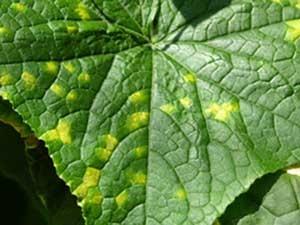
Fusarium mushroom causes the roots of the cucumber to die, which leads to yellowing of the leaves, and then the plant withers.Affected specimens are easily pulled out of the ground. Often, the development of the disease is observed during sharp daily fluctuations in atmospheric temperature, but when weather conditions stabilize, many mildly affected cucumbers can recover. Pythiosis can also be the cause of wilting of cucumbers. This is also a fungal parasite that causes necrosis of cucumber roots.
Protection of cucumbers
So, choosing the right planting site, timely deep watering of cucumbers and feeding them will greatly ensure the well-being of the plants. When applying fertilizers, be be careful about dosages.
To curb the development of fungal diseases, crop rotation is necessary, in which pumpkin crops are planted in the same beds no earlier than four seasons. In greenhouses, it is recommended to periodically replace the soil or carry out disinfection.
In addition, biological methods of soil disinfection are used, in which the soil is carefully removed from the greenhouse and placed outside in a pile no more than a meter high. Each layer is spilled with biologically active microorganisms (Baikal EM-1 preparations, humus tinctures, etc.), compost can be added. Such disinfection takes 2-3 years.
Remember that the spread of fungal diseases is facilitated by mechanical damage to the roots and trunks of cucumbers. Since their roots are very susceptible to damage, it may be better to do without loosening the soil. In this case, pay more attention to preparing the soil before planting.
Except rotation of vegetable crops, for the biological protection of cucumbers, it can be recommended to use biofungicides containing trichodermin. It is necessary to introduce mycelium into each hole at a distance of 3-10 cm from the shoots.Trichodermin suppresses the development of pathogens and has a stimulating effect on the development of vegetable crops. Non-phytotoxic, harmless to insects, humans and animals.
It is better to prevent yellowing of the leaves by observing the growing conditions and providing the cucumbers with the necessary nutrients. In addition, it is necessary to monitor the state of the microflora of greenhouses and the site, to prevent the development of pathogenic fungal diseases. Then you will always have healthy plants and a high yield of cucumbers.


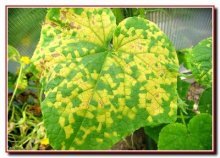
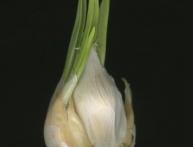


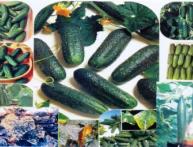
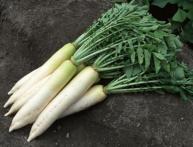
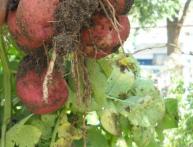
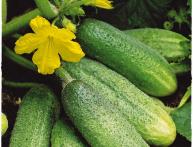
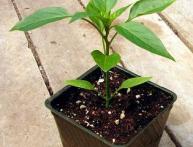
Comments
To prevent the leaves of cucumbers from turning yellow, I asked my husband to install a greenhouse in a swampy area of the garden, where watering is almost not needed. So they turned yellow only at the end of the summer season, when frosts began.
Last season, yellow spots appeared on the leaves of our cucumbers. After reading your article, only now we understand their origin - it was a clear lack of calcium in the soil. This year we will not allow this.
A cucumber is 80% water (I mean the fruit); naturally, the plant is moisture-loving and does not like strong sun. So watering is really important! But still, often the leaves turn yellow due to a lack of microelements. And this should be paid attention to first of all, if a lack of moisture is excluded.